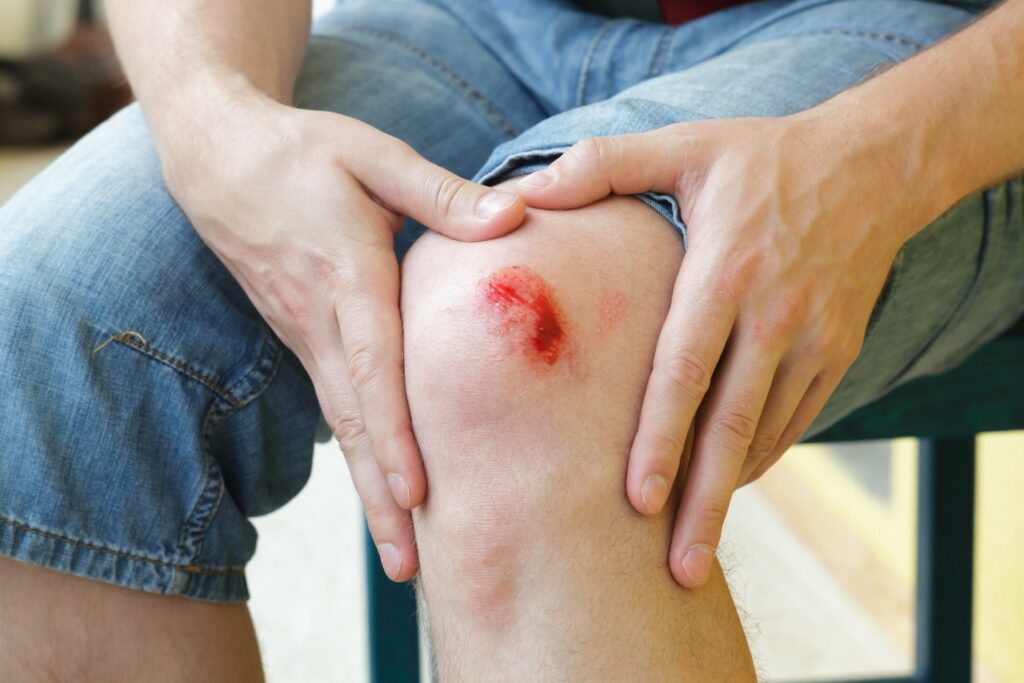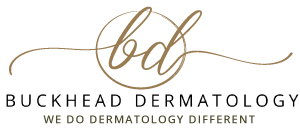Proper Care for Skin Scrapes and Scratches

Dermatologists want people to know that some misconceptions about how to care for scrapes and cuts on the skin may leave more of a scar and slow down healing. Although the steps to caring for these minor skin abrasions may seem simple, they do take time and effort, but they will be well worth it when you’ve got minimal or no scarring.
Skin Injuries Happen to Everyone
Whether a stay-at-home mom, an office, or a construction worker, skin injuries can happen to anyone. Skin injuries occur during food prep, playing sports or working out, spending time outdoors, and many other daily and routine activities. No person is exempt from skin injuries, but nobody has to accept a permanent scar as a result. Professional dermatologists want to help people properly treat and care for these skin injuries.
Cuts are the most common skin injury but burns and scrapes also have the potential to leave scars. Damaged skin must be cared for to ensure healing as well as reduce the size and appearance of scarring. Healthcare professionals are good at lining up the skin when there isn’t damage that prevents matching up the tissue, so stitches are a good option, and scarring is minimized.
First Things First
If you are on your own, the most important thing to do following a skin injury is to clean the area with mild soap and water. Debris or bacteria left in an open skin injury may cause infection and inflammation. Prolonged inflammation can cause scarring. Avoiding infection is critical immediately following a skin injury, so cleaning the area is essential.
An ointment applied over the injured area and covered with a bandage can help aid healing and minimize scarring. This process of cleansing, applying ointment, and covering with a bandage must be repeated daily to ensure the area is being treated with care. Contrary to popular belief, dermatologists strongly suggest avoiding the use of hydrogen peroxide to treat new skin injuries. Although the rough scabbing may not occur using this repeated process, the scarring will be significantly minimized, often resulting in a soft and lighter-colored area.
In cases where the skin has been burned and damaged, it may be too painful to clean. A bad fall off a bike can cause road rash, which needs to be cleaned. Depending on the severity of the skin injury, it may be necessary to seek professional medical help to achieve this.
Signs to Watch for That Require Attention
A professional doctor should see serious skin injuries, and signs to watch for that indicate the need for medical attention include:
- Continual bleeding
- Deep puncture holes
- Animal bites
- Burns (err on the side of caution on skin burns!)
- Injuries that are followed with a fever and increasing pain
Although most minor skin injuries can be treated at home following easy steps, any skin injury that is questionable or gets worse should get medical attention immediately.
Best Ways to Avoid and Treat Scarring
In addition to keeping a skin injury clean and covered, there are other things that individuals can do to help avoid scarring.
As your mother and grandmother likely told you, never pick at scabs! Picking and scratching at scabs causes inflammation, slows healing, and increases the chances of a visible scar. Once a skin injury is healed, if there is a scar, a professional can suggest different ways to minimize the visibility of the scar. Treatments may include topical creams and compression bandages to flatten scars or products to lighten darkened areas. Some scars may be surgically removed, or the scar site injected to fill any dents in the skin and make the skin appear smoother. Laser therapies can also flatten and soften scars while addressing any discoloration on this skin. Some procedures will need to be performed by a medical professional, but a local dermatologist can treat minor skin injuries. If a skin injury is concerning and any of the symptoms above are present, seek medical help immediately.
People get skin injuries regularly in everyday life. Knowing how to treat minor injuries may make the difference between having a visible scar after healing and not. When it comes to your skin and confidence in how you look, treating and protecting your skin properly after an injury does make a difference. Although simply washing and covering doesn’t give people the scab they are expecting, slower and proper healing will have better results and may avoid scarring altogether, and that makes it worth the effort.
If you have any skin concerns and want to speak with a professional licensed dermatologist, contact Dr. Sherrie Straughn at Buckhead Dermatology today. She accepts new clients and is passionate about helping clients achieve their skin’s optimal appearance. Buckhead Dermatology is located in Atlanta and works with dozens of insurance carriers to help make beautiful and healthy skin affordable for everyone.
